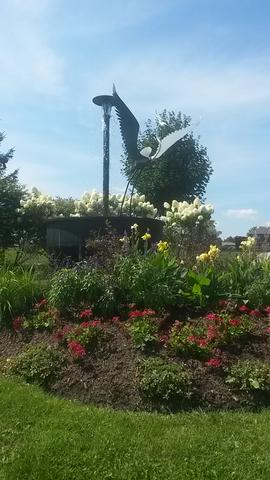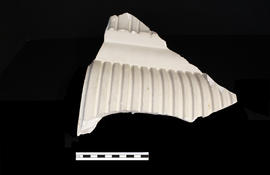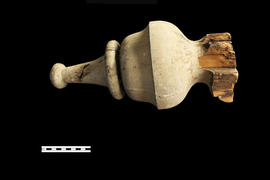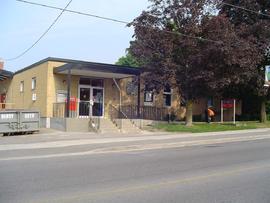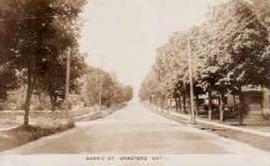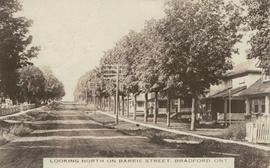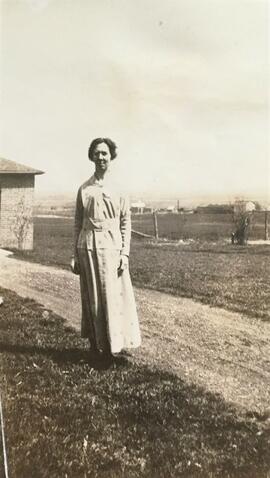Plaque by the Bradford West Gwillimbury Local History Association:
"This cast iron base and impeller were components of one of the two original water pumps installed in the 1928 Holland Marsh Drainage Scheme. The pumps would lower the water level by four to five feet thereby draining the water out of the marsh and allowing the marsh lands to be dried and cultivated. The two pumps could each lift 20 000 gallons per minute from the reservoir over the dam.
The Town of Bradford West Gwillimbury assisted in developing the water fountain. George Holancin, local metal sculptor, created the winged blue heron. This piece won Top Honours for Floral Displays as part of the Communities in Bloom Ontario 2006 program."
